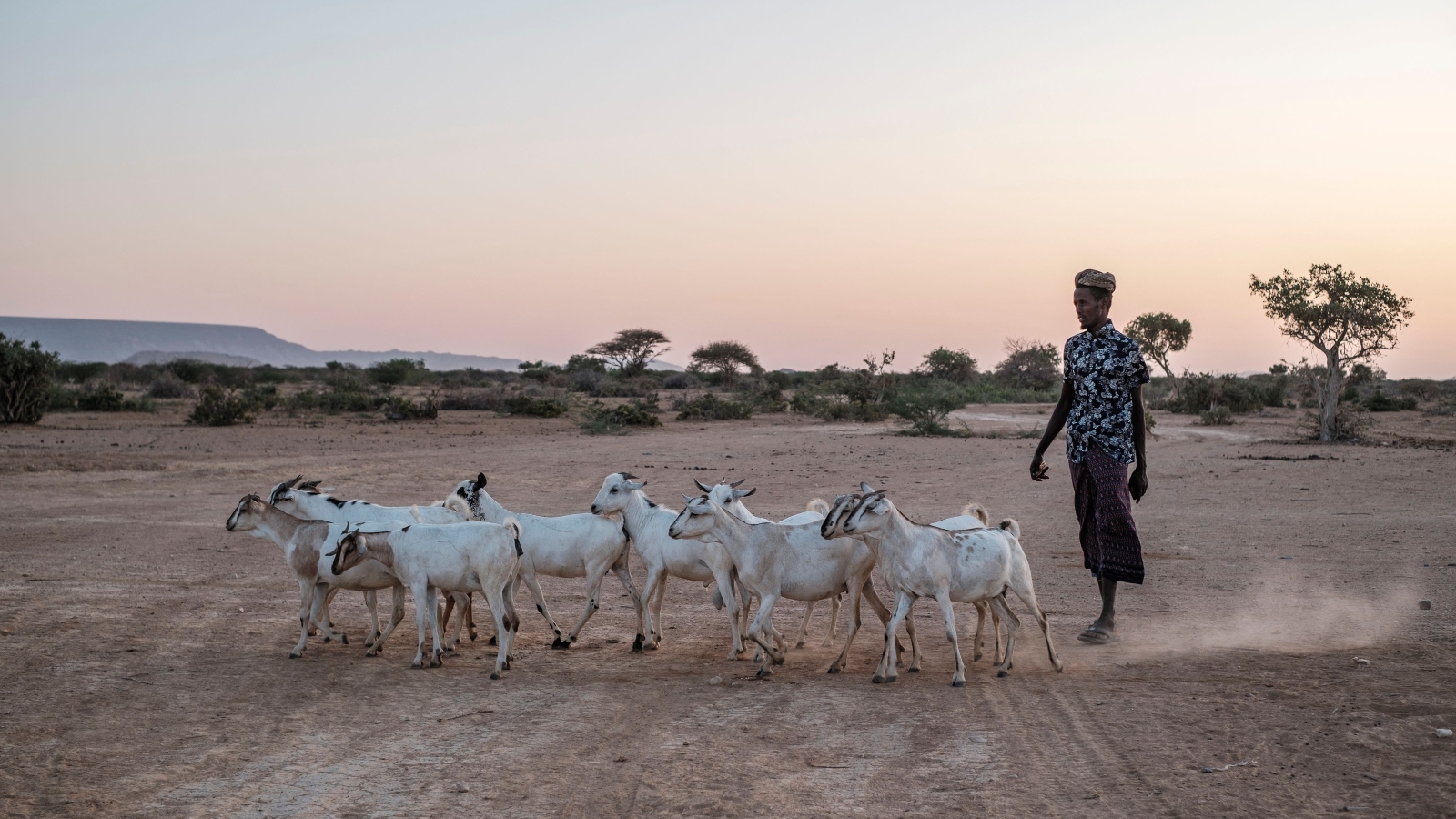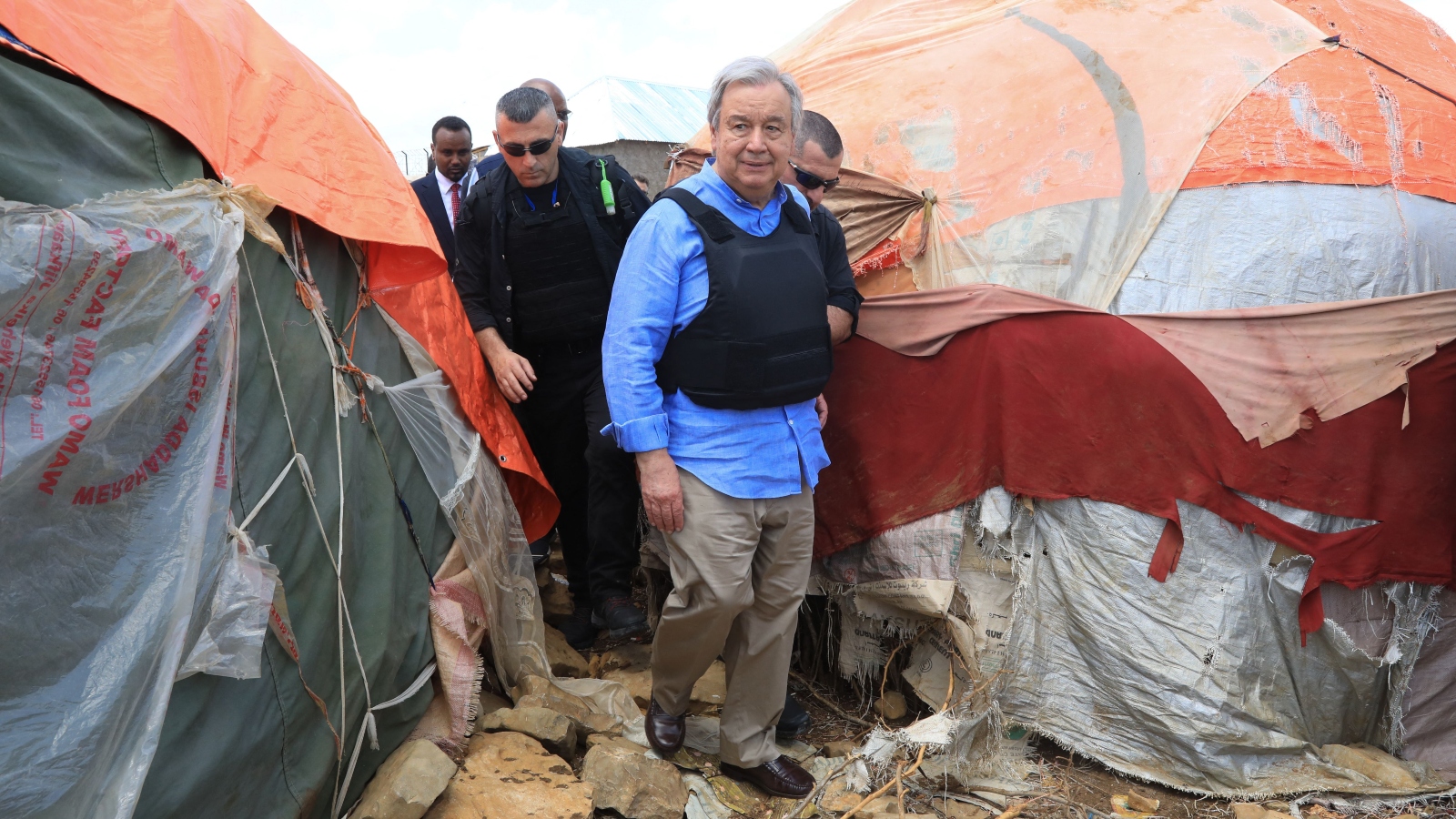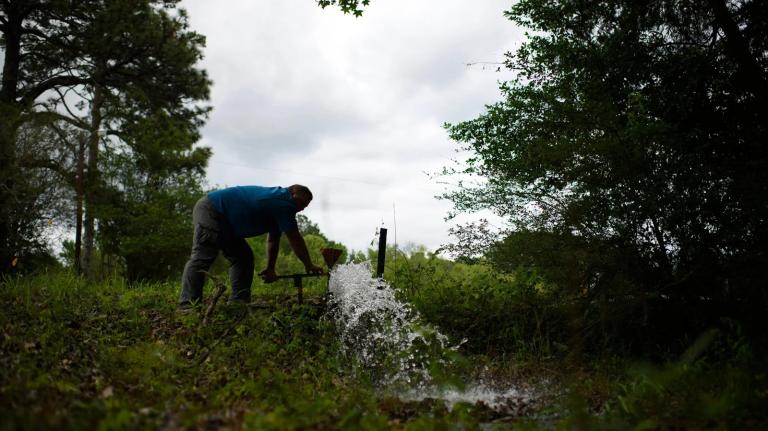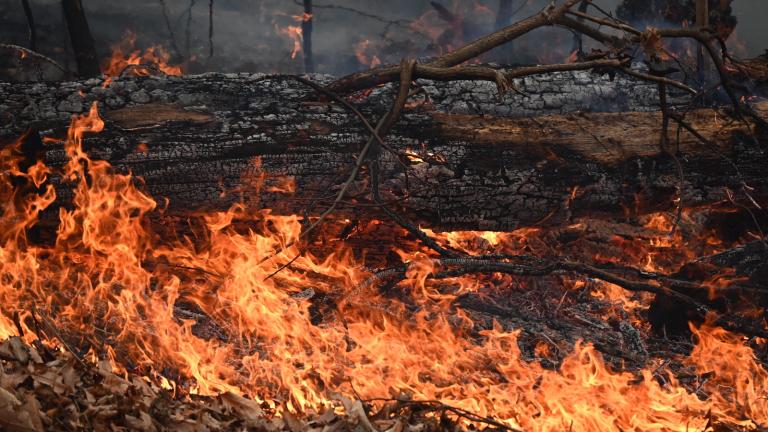Over the past three years, an extreme drought has pushed the Horn of Africa to the brink of famine, causing one of the worst humanitarian crises in modern history. The dry spell forced more than 2.6 million people in Somalia, Ethiopia, and Kenya to leave their homes last year, and it killed more than 43,000 people in Somalia alone.
A recent study from the meteorological organization World Weather Attribution found that climate change made the drought 100 times more likely. The region has always swung between wet and dry periods, but high temperatures have increased what scientists call “evaporative demand” over the desert, causing moisture to disappear faster than ever and making every drought more severe as a result. The current rain pattern “would not have led to drought at all” in a preindustrial world, the researchers found.
Even though climate change made the disaster far easier to predict, humanitarian aid donors did not heed its warnings. As the drought unfolded, wealthy countries and aid organizations rushed to deliver supplies. The United States Agency for International Development, or USAID, shipped more than $1 billion worth of food last year, and the UN’s Food and Agriculture Organization, or FAO, mobilized around $138 million of cash and food. The UN will hold a “pledging conference” in New York next week, calling on the international community to send billions more in assistance. But this aid started to flow only after food insecurity in the region had already peaked, and practically none of it will make the region more resilient to future climate shocks.
The international community’s response to the food shortage has been in keeping with past relief efforts in the region. Weather forecasters predicted a previous dry spell in 2011, but money arrived too late to prevent death and displacement. Though the response was faster during another drought in 2016, international donors failed to provide money for infrastructure development and climate adaptation, which helped ensure that the region remained vulnerable to the present drought.
Experts say that the crisis in the Horn of Africa highlights the need for a paradigm shift in the humanitarian aid system, which was built to address sudden and infrequent calamities. Now, however, short-lived disasters like hurricanes and wildfires are happening more often, and climate change is also causing slow-onset crises such as drought and sea-level rise. That means the best way to protect against climate impacts is to spend money before they happen.
“Humanitarians have been trying to respond [to climate change], but the way in which we’ve been doing things is not meeting the needs,” said Beza Tesfaye, a research director at the humanitarian aid organization Mercy Corps. “The needs are growing and becoming more complex.”
The easiest way for aid organizations like the FAO and USAID to improve their response is to start acting earlier. Experts spotted the potential for drought in the Horn of Africa back in 2019, but advocates in the region struggled to raise money for a response until last year.
“I think that there is a lot more that could have been done that wasn’t,” said Brenda Lazarus, a food security economist at the FAO, based in Kenya. Lazarus’s team spotted some of the early signs of consecutive failed rains in the region as early as 2020 and appealed to aid partners for help. “I can remember three years ago going to donors and partners and saying, ‘Look, we know this drought is coming. It’s very clear from the forecast that things are likely going to get really bad soon.’”
If there had been money for pre-disaster outreach, the farmers and pastoralists who make up the majority of Somalia’s labor force might have been able to prepare for the drought, said Jaabir Abdullahi Hussein, a climate researcher at Somalia’s environmental ministry. They could have planted more drought-tolerant staple crops or sold off their livestock herds before the animals began to starve.
“The local communities, they don’t actually know the drought is coming,” Hussein told Grist. “They don’t get the required information on when, how, where, and what to plant. All of a sudden it’s revealed that the rain is not coming, and the farmers lose their crops and everything.” Somalia’s national government didn’t have the capacity to warn pastoralists around the country about the likelihood of a failed rainy season; if the government had received help from outside organizations, Hussein said, it might have been able to prevent many deaths.

In other parts of the world, aid organizations have experimented with so-called “anticipatory action,” and the results have been encouraging. Last year the nonprofit GiveDirectly sent cash payments to flood-prone populations in Mozambique just before a major cyclone, and it found that recipients used the money on survival necessities, stockpiling food and strengthening their home defenses or paying for transportation to evacuate. The United Nations’ World Food Programme has achieved similarly encouraging results by delivering advance cash payments to residents of Bangladesh four days before a severe flood.
“These things to some extent can be forecasted, and there have been a lot of conversations in the humanitarian community around being better at anticipating disasters,” said Tesfaye of Mercy Corps. “But in practice we don’t see a lot of money flowing at early stages where there can be a meaningful aversion of impacts.”
The same dynamic holds true for future-oriented adaptation funding, which could help make livelihoods like agriculture and livestock more resilient to climate change. These industries together account for almost three-quarters of Somalia’s economic output, and both are extremely sensitive to climate change: A failed rainy season causes crop failures and deprives sheep and goat herds of food and water, which stunts growth and reduces milk output. Most communities in the region don’t have access to alternate water sources like wells and reservoirs.
The aid that organizations like USAID provide during drought emergencies doesn’t alleviate these long-term issues, and most other development funding from United Nations organizations isn’t focused on climate change. There are some new financing arms like the Green Climate Fund that have cobbled together money for some adaptation pilot projects in the Horn of Africa, but these projects tend to be hyperlocal and isolated. The Green Climate Fund, for instance, has spent around $42 million to date on two projects in Somalia.
“Those [adaptation projects] are really significantly underfunded,” said Lazarus. “We’re thinking that we’re going to have these micro-scale investments in these pilot projects, and that that’s going to have kind of a transformative impact on the region — and the reality is these programs are just way too small to do that.”
There’s no shortage of potential projects that could help: Harvesting rainwater and planting with drought-resilient seeds could help farmers protect their crops during dry spells, and new water storage facilities could help pastoralists ensure their herds don’t die of dehydration. A 2015 United Nations initiative in Somalia led to the construction of a novel “sand dam” that traps and stores freshwater beneath layers of sand, ensuring that farmers don’t have to rely on inconsistent rains. But Africa has received only 4 percent of climate adaptation funding spent to date, despite being home to almost a fifth of the world’s population. A recent UN report found that adaptation spending in developing countries is hovering between 10 and 20 percent of current need.

Many hope that this funding logjam was broken last year at the UN climate conference in Sharm el-Sheikh, Egypt, where developed countries agreed to create a fund that will address what negotiators call “loss and damage” from climate change. The fund is essentially the start of a climate reparations program, wherein developed countries that have emitted most historical carbon are supposed to send some kind of funding to poorer countries that are most susceptible to the effects of climate change.
In theory, nations like Somalia should be among the biggest beneficiaries of this “loss and damage” fund, but there are few details about what kind of assistance richer countries will be providing, according to Swenja Surminski, a professor at the London School of Economics who studies climate adaptation financing.
“It is not really clear to me what [the funds] are going to be used for, and also how we distinguish between spending on ‘loss and damage’ and spending on ‘adaptation,’” Surminski told Grist. It’s also uncertain whether the fund will provide cash payments or more complex financing arrangements such as bonds and insurance plans. If the money does allow countries to invest in adaptation infrastructure, says Surminski, it could go a long way toward softening the blow of future disasters. First, however, the money itself needs to materialize.
Responding to the impacts of climate change will also require developed countries to rethink the aid they already provide. For decades, multilateral organizations have distinguished between “humanitarian” aid for disasters and “development” aid designed to help lift countries out of poverty — a distinction that mirrors climate negotiators’ differentiation between loss and damage compensation and adaptation funding. The escalating pace of the climate crisis in countries like Somalia has shown that the two disciplines aren’t separate, and that long-term development funding is necessary to forestall the effects of severe disasters such as drought.
“When we have a humanitarian emergency, we’re all kind of able to move in a coordinated way,” said Lazarus. When it comes to preparing for climate change, though, “we’re kind of still missing that,” she added, “and because I think we’re not moving in the most coordinated manner, I think that has been kind of limiting the scalability of a lot of these programs.”
Hussein of Somalia’s environmental ministry told Grist that the droughts that have battered Somalia and the region only make the moral case for adaptation more urgent. Wealthy countries have an obligation to address disasters that their emissions helped cause, he argued, and reforming their aid response is the best place to start.
“We need more ambitious funds for climate impacts,” he said. “That is not ‘aid.’ It’s a responsibility that has to be taken by those countries that have caused climate change.”



